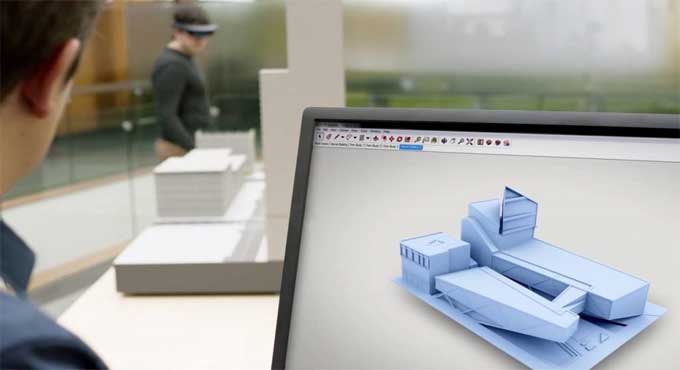3D-Printing everything in 2023 by using SketchUp

What is 3D Printing in SketchUp?
Creating physical objects from digital designs is made possible by 3D printing. There is no doubt that 3D printing has the potential to transform almost every aspect of our lives, from simple toys to complex medical implants. It is important to note, however, that not all designs can be 3D printed. It is significant to consider specific characteristics when creating a design in order to print it.
This is where SketchUp comes in. You can easily create precise, accurate, and printable designs with SketchUp's powerful 3D modelling tool. It is possible to create anything from furniture to buildings to toys and more with SketchUp. Using SketchUp, you can export a design as a 3D-printable file for printing on any 3D printer that is compatible with it.
How to make any design 3D printable in SketchUp?
To make a design 3D printable in SketchUp, you should follow these steps:
1. Check the design for errors: Use SketchUp's Solid Inspector extension or the Checkup tool to make sure the design is "watertight" and free of any gaps, holes, or other errors that could cause issues during printing.
2. Orient the design: Position the design in the way you would like it to be printed. This will include making sure it fits within the print bed and considering any supports that may need to be added for overhangs.
3. Scale the design: Determine the desired size of the final print and scale the model accordingly.
4. Export the model: Export the model as an STL or OBJ file, which are standard file formats for 3D printing. Make sure the export settings are set to the appropriate settings for your 3D printer.
5. Slice the model: Use a slicing software to create the G-code file needed to print the model. This will include setting the print quality, infill, and other settings specific to your 3D printer.
6. Print the model: Use the G-code file to print the model on your 3D printer.
Tips to make any design 3D printable in SketchUp
Here are some tips for making any design 3D printable in SketchUp:
1. Start with a solid model: Make sure that your design is a solid 3D model with no gaps or holes. You can use the Solid Inspector extension to check your model and fix any issues.
2. Keep your model simple: Simplify your design as much as possible, as complex designs can cause printing errors. Use the minimum number of faces and edges required to achieve the desired shape.
3. Use the correct units: Make sure that you use the correct units when designing your model. SketchUp defaults to inches, but you can change the units to millimetres or centimetres in the model info window.
4. Check for wall thickness: Ensure that your model has a sufficient wall thickness to avoid any printing errors. Generally, a wall thickness of 1-2mm is recommended for most 3D printers.
5. Orient your model correctly: Consider the orientation of your model when printing. If possible, position it so that it requires minimal support structures.
6. Use support structures: If your model requires support structures, make sure to add them in SketchUp. Support structures help prevent the model from collapsing during printing.
7. Export your file correctly: Export your model as an STL file, which is the standard file format used by most 3D printers. You can use the STL exporter extension to export your file directly from SketchUp.
8. Test your design: Before printing your model, run it through a 3D printing software to check for any potential issues or errors. A successful print will be ensured by doing this.
What are some benefits of 3D printing in SketchUp?
A fascinating and cutting-edge technology, 3D printing has the potential to completely alter how we design and produce goods. With SketchUp, you can quickly transform your concepts into 3D-printable designs, allowing users vast choice of creative and innovative options. The following are a few of the main advantages of 3D printing using SketchUp:
1. Fast Process: Because 3D printing is so much faster than conventional manufacturing processes, you can design and build goods rapidly and effectively. Since you can quickly iterate and develop your designs without the need for pricey equipment or moulds, this is extremely helpful for prototyping and testing new concepts.
2. Easy to use: SketchUp is known for its intuitive and user-friendly interface, making it easy for beginners to create 3D models.
3. Accurate designs: SketchUp has powerful tools that allow you to create precise and accurate 3D designs, ensuring that your 3D prints come out exactly as you intended.
4. Customizable designs: SketchUp allows you to create custom designs and modify existing designs to fit your needs, giving you the ability to create unique and personalized 3D prints.
To learn more, watch the following video tutorial.
Video Source: SketchUp School
5. Cost-effective: 3D printing with SketchUp is a cost-effective way to create customized parts or prototypes without having to invest in expensive manufacturing equipment.
6. Sustainability: Due to its lower energy use and reduced waste production, 3D printing is a more sustainable form of manufacturing than traditional methods. By optimizing designs for 3D printing with SketchUp, you can cut down on material consumption and waste.
Final Thoughts
With SketchUp, you can create stunning 3D-printable designs in no time. You can unlock the magic of 3D printing by following the tips and techniques outlined in this blog. Bringing your ideas to life is easy with SketchUp, a tool that helps you bring your ideas to life with 3D printing.



